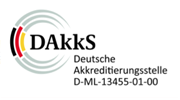LAB HOURS: MON - THU and SAT : 9:00 AM to 9:00 PM
FRI and SUN : 9:00 AM to 6:00 PM

Lecture - Human Papilloma Virus (HPV)
FML seminar, June 7, 2012: New Developments in Gynecology with Focus on the Clinical Laboratory

Human Papilloma Virus
Dr. Sibylle Blumenthal
Scientific Supervisor at Freiburg Medical Laboratory, Dubai
Overview
There are many types of the human Papilloma virus and most are transmitted sexually. The virus enters into the host cells via microlesions of the epidermis or mucosa. Many of these do not show symptoms, do not cause disease and disappear after 1 - 2 years.
Of the different types of HPV, some carry a high oncogenic risk, others a low oncogenic risk. Several of these types may progress to pre-cancerous lesions and invasive cancer. HPV16-DNA (high risk) is detected in 50% of these carcinomas. Up to 20% of the cancers contain HPV18-DNA (high risk). HPV6 and HPV11 are most commonly found in genital warts.
HPV is cause of nearly all cases of cervical cancer and cervical intraepithelial neoplasia.
Various diagnostic tests with and without genotyping for HPV are available on the market. They are based on technologies such as hybrid-capture, reverse line-blot hybridization, real time PCR, gel electrophoresis, in situ or microarray technology.
Extensive genotyping and testing using the microarray technology is done by amplifying part of a gene of the Papilloma virus (a DNA virus) and then hybridizing these amplicons to an array to specify any of a number of different types of the virus. Various high risk and low risk types can be detected. Such a multiplexing platform combines a microarray with a non-fluorescent colorimetric reading. It has high sensitivity and specificity. Coinfections of several HPV genotypes can be detected. Early detection can be helpful for therapy.
Testing using real time PCR is usually restricted to a few subtypes, generally 16 and 18 because of the number of dyes and detection channels of the reader. However, general high-risk types are detectable without specifying a genotype. Another option for genotyping is sequencing the virus after detection by hybridization, PCR or other methods.
Two vaccines are available on the market, both protect against HPV16 and HPV18, one of them additionally protects against the low-risk types HPV6 and HPV11.

Lab hours
MON - THU and SAT 9:00 AM to 9:00 PM | FRI and SUN : 9:00 AM to 6:00 PM













